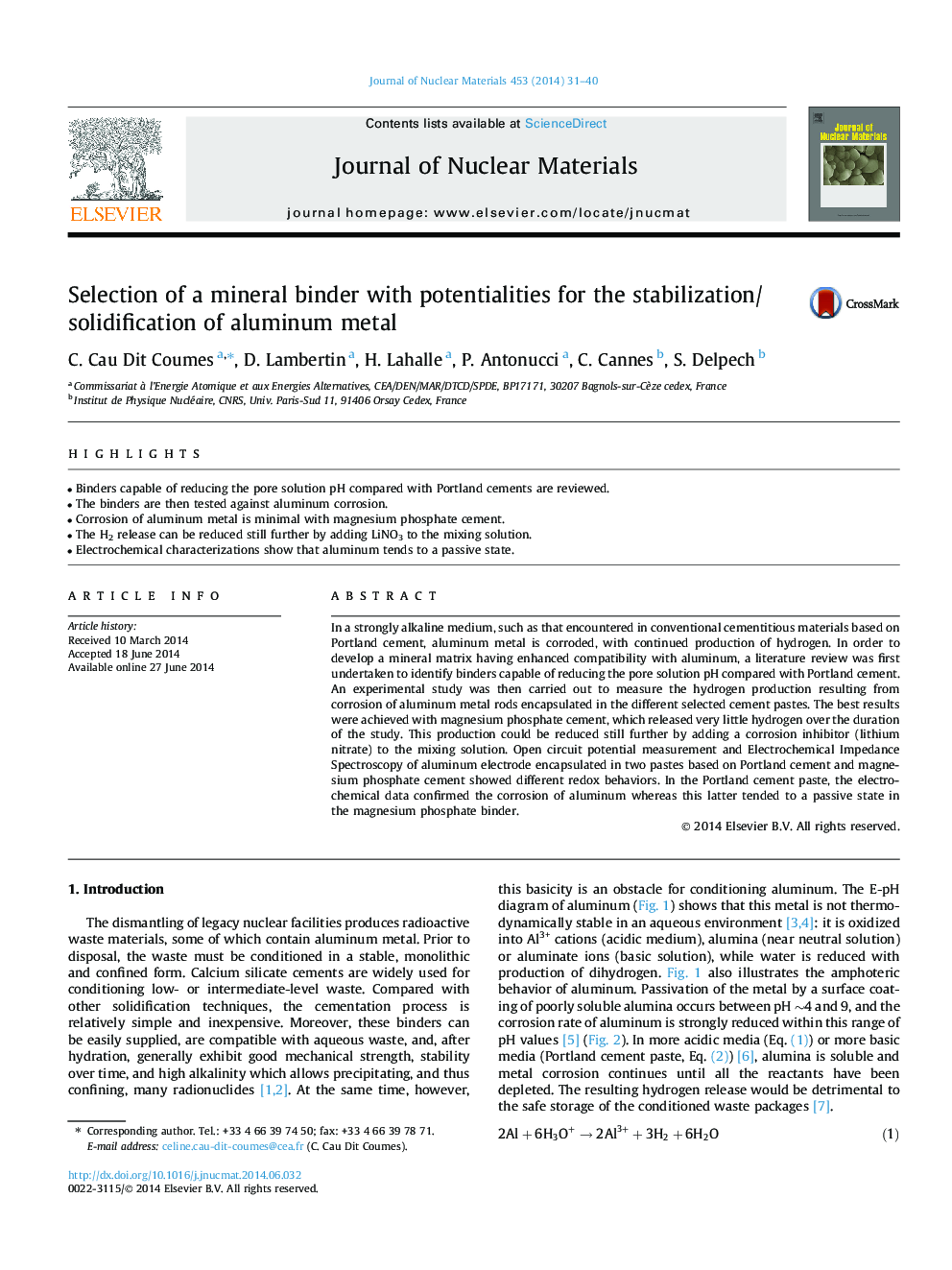| Article ID | Journal | Published Year | Pages | File Type |
|---|---|---|---|---|
| 7967464 | Journal of Nuclear Materials | 2014 | 10 Pages |
Abstract
In a strongly alkaline medium, such as that encountered in conventional cementitious materials based on Portland cement, aluminum metal is corroded, with continued production of hydrogen. In order to develop a mineral matrix having enhanced compatibility with aluminum, a literature review was first undertaken to identify binders capable of reducing the pore solution pH compared with Portland cement. An experimental study was then carried out to measure the hydrogen production resulting from corrosion of aluminum metal rods encapsulated in the different selected cement pastes. The best results were achieved with magnesium phosphate cement, which released very little hydrogen over the duration of the study. This production could be reduced still further by adding a corrosion inhibitor (lithium nitrate) to the mixing solution. Open circuit potential measurement and Electrochemical Impedance Spectroscopy of aluminum electrode encapsulated in two pastes based on Portland cement and magnesium phosphate cement showed different redox behaviors. In the Portland cement paste, the electrochemical data confirmed the corrosion of aluminum whereas this latter tended to a passive state in the magnesium phosphate binder.
Related Topics
Physical Sciences and Engineering
Energy
Nuclear Energy and Engineering
Authors
C. Cau Dit Coumes, D. Lambertin, H. Lahalle, P. Antonucci, C. Cannes, S. Delpech,
